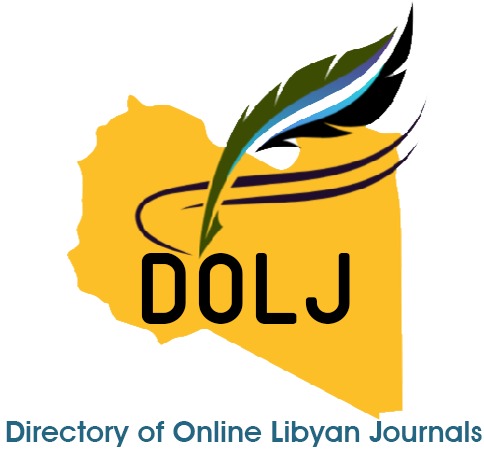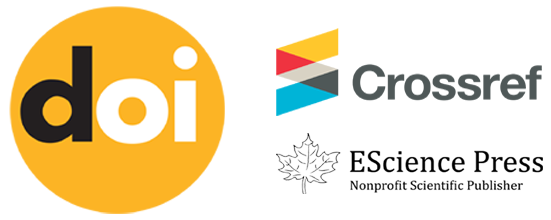Prognostic, Clinical, and Demographic Features in SCN1A Mutation-positive Dravet Syndrome
DOI:
https://doi.org/10.69667/lmj.2517305Keywords:
Dravet Syndrome; SCN1A; Epileptic EncephalopathyAbstract
Dravet syndrome typically manifests after the first year of life with prolonged febrile and afebrile seizures in previously developmentally normal children. The epilepsy is often refractory to standard anti-seizure medications, and by age two, most children develop epileptic encephalopathy. This retrospective study aimed to identify predictors of treatment response and developmental outcomes, as well as characterise demographic and clinical features in patients with SCN1A mutations. We reviewed clinical records of patients meeting Dravet syndrome diagnostic criteria, extracting data on demographics, clinical phenotype, and treatment history. Seventeen patients were included (male-to-female ratio 0.54:1; mean age 10.03 ± 5.8 years). All had normal birth histories, and 94.1% experienced their first seizure before six months of age, with fever as the precipitating factor in 70.6%. All patients had a history of prolonged seizures or status epilepticus. Initial interictal EEGs were normal in 76.5% during the first two years, and brain MRI was normal in 88.2%. While all children were developmentally normal before seizure onset, 76.5% later exhibited developmental delay and cognitive decline. Seizures worsened in 52.9% of patients when treated with phenobarbital, carbamazepine, lamotrigine, or vigabatrin (as mono- or polytherapy). After genetic confirmation, 94.1% received a combination of stiripentol, valproate, and clobazam, resulting in >50% seizure reduction in 88.2%. Dravet syndrome should be considered in children with refractory epilepsy, infantile-onset recurrent seizures (including febrile seizures/status epilepticus), and normal early development. Genetic testing enables early diagnosis and guides appropriate treatment, improving outcomes. However, no statistically significant predictors of treatment response or developmental outcomes were identified in this cohort
References
Harkin LA, McMahon JM, Iona X, Dibbens L, Pelekanos JT, Zuberi SM, et al. The spectrum of SCN1A-related infantile epileptic encephalopathies. Brain. 2007;130(Pt 3):843-52.
Claes L, Del-Favero J, Ceulemans B, Lagae L, Van Broeckhoven C, De Jonghe P. De novo mutations in the sodium-channel gene SCN1A cause severe myoclonic epilepsy of infancy. Am J Hum Genet. 2001;68(6):1327-32.
Lossin C. A catalogue of SCN1A variants. Brain Dev. 2009;31(2):114-30.
Dravet C, Bureau M, Oguni H, Fukuyama Y, Cokar O. Severe myoclonic epilepsy in infancy (Dravet syndrome). In: Roger J, Bureau M, Dravet C, Genton P, Tassinari CA, Wolf P, editors. Epileptic syndromes in infancy, childhood and adolescence. 3rd ed. London: John Libbey; 2002. p. 81-103.
Chiron C, Marchand MC, Tran A, Rey E, D'athis P, Vincent J, et al. Stiripentol in severe myoclonic epilepsy in infancy: a randomised placebo-controlled syndrome-dedicated trial. STICLO study group. Lancet. 2000;356(9242):1638-42.
Nieto-Barrera M, Candau R, Nieto-Jiménez M, Correa A, del Portal LR. Topiramate in the treatment of severe myoclonic epilepsy in infancy. Seizure. 2000;9(8):590-4.
Kassai B, Chiron C, Augier S, Cucherat M, Rey E, Gueyffier F, et al. Severe myoclonic epilepsy in infancy: a systematic review and a meta-analysis of individual patient data. Epilepsia. 2008;49(2):342-8.
Mullen SA, Scheffer IE. Translational research in epilepsy genetics: sodium channels in man to interneuronopathy in mice. Arch Neurol. 2009;66(1):21-6.
Claes LR, Deprez L, Suls A, Baets J, Smets K, Van Dyck T, et al. The SCN1A variant database: a novel research and diagnostic tool. Hum Mutat. 2009;30(10):E904-20.
Kanai K, Yoshida S, Hirose S, Oguni H, Kuwabara S, Sawai S, et al. Physicochemical property changes of amino acid residues that accompany missense mutations in SCN1A affect epilepsy phenotype severity. J Med Genet. 2009;46(10):671-9.
Zuberi SM, Brunklaus A, Birch R, Reavey E, Duncan J, Forbes GH. Genotype-phenotype associations in SCN1A-related epilepsies. Neurology. 2011;76(7):594-600.
Guerrini R, Oguni H. Borderline Dravet syndrome: a useful diagnostic category? Epilepsia. 2011;52 Suppl 2:10-2.
Ragona F, Granata T, Dalla Bernardina B, Offredi F, Darra F, Battaglia D, et al. Cognitive development in Dravet syndrome: a retrospective, multicenter study of 26 patients. Epilepsia. 2011;52(2):386-92.
McIntosh AM, McMahon J, Dibbens LM, Iona X, Mulley JC, Scheffer IE, et al. Effects of vaccination on onset and outcome of Dravet syndrome: a retrospective study. Lancet Neurol. 2010;9(6):592-8.
Symonds JD, Zuberi SM, Stewart K, McLellan A, O'Regan M, MacLeod S, et al. Incidence and phenotypes of childhood-onset genetic epilepsies: a prospective population-based national cohort. Brain. 2019;142(8):2303-18.
Wu YW, Sullivan J, McDaniel SS, Meisler MH, Walsh EM, Li SX, et al. Incidence of Dravet syndrome in a US population. Pediatrics. 2015;136(5):e1310-5.
Skluzacek JV, Watts KP, Parsy O, Wical B, Camfield P. Dravet syndrome and parent associations: the IDEA League experience with comorbid conditions, mortality, management, adaptation, and grief. Epilepsia. 2011;52 Suppl 2:95-101.
Cetica V, Chiari S, Mei D, Parrini E, Ferrari AR, Sicca F, et al. Clinical and genetic factors predicting Dravet syndrome in infants with SCN1A mutations. Neurology. 2017;88(11):1037-44.
Caraballo RH, Fejerman N. Dravet syndrome: a study of 53 patients. Epilepsy Res. 2006;70 Suppl 1:S231-8.
Tro-Baumann B, von Spiczak S, Lotte J, Bast T, Haberlandt E, Sassen R, et al. A retrospective study of the relation between vaccination and occurrence of seizures in Dravet syndrome. Epilepsia. 2011;52(1):175-8.
Dravet C, Bureau M, Oguni H, Fukuyama Y, Cokar O. Severe myoclonic epilepsy in infancy: Dravet syndrome. Adv Neurol. 2005;95:71-102.
Oguni H, Hayashi K, Osawa M, Awaya Y, Fukuyama Y, Fukuma G, et al. Severe myoclonic epilepsy in infancy: clinical analysis and relation to SCN1A mutations in a Japanese cohort. Adv Neurol. 2005;95:103-17.
Dravet C. Severe myoclonic epilepsy in infants and its related syndromes. Epilepsia. 2000;41 Suppl 9:7-10.
Striano P, Mancardi MM, Biancheri R, Madia F, Gennaro E, Paravidino R, et al. Brain MRI findings in severe myoclonic epilepsy in infancy and genotype-phenotype correlations. Epilepsia. 2007;48(6):1092-6.
Scott RC, King MD, Gadian DG, Neville BG, Connelly A. Hippocampal abnormalities after prolonged febrile convulsion: a longitudinal MRI study. Brain. 2003;126(Pt 11):2551-7.
Li BM, Liu XR, Yi YH, Deng YH, Su T, Zou X, et al. Autism in Dravet syndrome: prevalence, features, and relationship to the clinical characteristics of epilepsy and mental retardation. Epilepsy Behav. 2011;21(3):291-5.
Yu FH, Mantegazza M, Westenbroek RE, Robbins CA, Kalume F, Burton KA, et al. Reduced sodium current in GABAergic interneurons in a mouse model of severe myoclonic epilepsy in infancy. Nat Neurosci. 2006;9(9):1142-9.
Giraud C, Treluyer JM, Rey E, Chiron C, Vincent J, Pons G, et al. In vitro and in vivo inhibitory effect of stiripentol on clobazam metabolism. Drug Metab Dispos. 2006;34(4):608-11.
Chiron C. Stiripentol for the treatment of seizures associated with Dravet syndrome. Expert Rev Neurother. 2019;19(4):301-10.
Striano P, Striano S, Minetti C, Zara F. Refractory, life-threatening status epilepticus in a 3-year-old girl. Lancet Neurol. 2008;7(3):278-84.
de Lange IM, Gunning B, Sonsma ACM, van Gemert L, van Kempen M, Verbeek NE, et al. Influence of contraindicated medication use on cognitive outcome in Dravet syndrome and age at first afebrile seizure as a clinical predictor in SCN1A-related seizure phenotypes. Epilepsia. 2018;59(6):1154-65.











